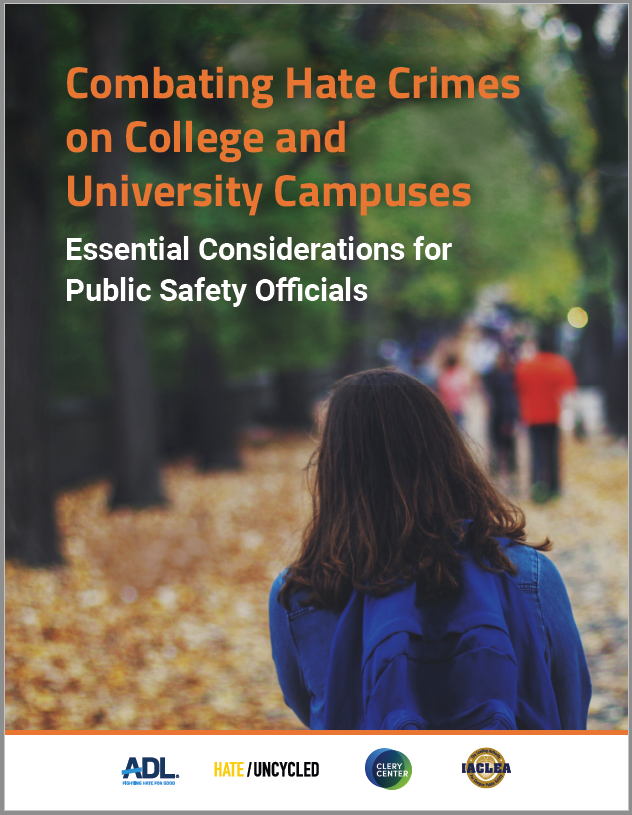| Combating Hate Crimes on College and University Campuses: Essential Considerations for Public Safety Officials |
|
June 22, 2021 Combating Hate Crimes on College and University Campuses: Essential Considerations for Public Safety OfficialsIn wanting to understand campus safety concerns people often wish for one number or data point that can tell them everything. But no one number can represent the myriad facets influencing campus violence analysis today. It’s crucial to know what the numbers we have do and do not represent so we can accurately reference them when trying to understand what violence looks like at individual campuses and, therefore, how to tailor actions to best respond to and prevent that violence. One year ago, the Anti-Defamation League (ADL) and the International Association of Campus Law Enforcement Agencies (IACLEA) came to Clery Center with a question—why does hate crime data housed by the Department of Education’s Clery crime statistics website differ from what can be pulled from the FBI? This great question launched a year-long collaborative project where we worked together to develop Combating Hate Crimes on College and University Campuses: Essential Considerations for Public Safety Officials. We worked together to clarify not only the specificity of what Clery hate crime data represents but also how the nature of hate crimes requires a thoughtfulness and attentiveness from campus administration in both responding to an incident and informing the campus community about efforts taking place to prevent future occurrences and address the lasting harmful impact an incident can cause. We hope campus public safety officials reading this guide walk away with a clearer understanding of the significance of messaging and language when training officers on responding to hate crime incidents as well as when receiving a report of a hate crime from a victim or witness. Combating Hate Crimes provides campus safety professionals with:
There will never be one magic number that represents all the harm violence can cause to a campus community but there is tremendous value in digging into the numbers that do exist, gleaning all the information they provide, and building a responsive violence prevention program that restores trust and safety. It is our hope that this free resource will help campuses in these endeavors. Download Combating Hate Crimes on College and University Campuses: Essential Considerations for Public Safety Officials here: This resource was created through a partnership between ADL (Anti-Defamation League), Clery Center and the International Association of Campus Law Enforcement Administrators (IACLEA). ADL is a leading anti-hate organization that works closely with law enforcement to assist them in protecting communities from extremism and hate and, as a leader in the fight against hate crimes, provides expertise in community response, legislative advocacy and inclusive school climates. Founded in 1913, ADL’s mission is to stop the defamation of the Jewish people and to secure justice and fair treatment to all. Founded in 1987, Clery Center was the first nonprofit organization dedicated to the prevention of criminal violence at colleges and universities nationwide and continues to be the national leader today. Their mission is to work together with colleges and universities to create safer campuses through education, awareness, policy, and prevention initiatives. The International Association of Campus Law Enforcement Administrators (IACLEA) is the largest professional association devoted to excellence in campus public safety and policing. Its members are police chiefs, public safety directors, police officers, and security personnel at institutions of higher education across the globe. IACLEA is the leading authority for campus public safety. |



